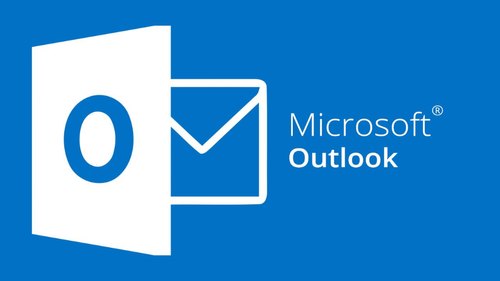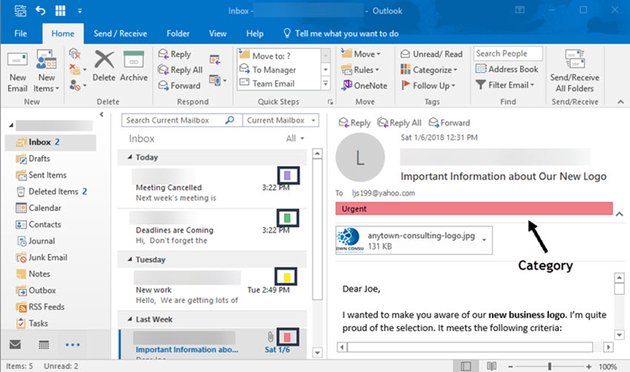Microsoft Outlook Software

Microsoft Outlook Software
Microsoft Outlook is a personal information manager software system ( Email Client ) from Microsoft, available as a part of the Microsoft Office suite. Though primarily an email client, Outlook also includes such functions as calendaring, task managing, contact managing, note-taking, journal logging and web browsing.
Individuals can use Outlook as a stand-alone application; organizations can deploy it as multi-user software (through Microsoft Exchange Server or SharePoint) for such shared functions as mailboxes, calendars, folders, data aggregation (i.e., SharePoint lists), and appointment scheduling. Microsoft has released apps for most mobile platforms, including iOS and Android. In addition, Windows Phone devices can synchronize almost all Outlook data to Outlook Mobile. Using Microsoft Visual Studio, developers can also build their own custom software that works with Outlook and Office components.
In March 2020, Microsoft announced the launch of a series of new features to appeal to business customers of its Teams platform, in addition to the features[which?] introduced the previous month. The chat and collaboration module now includes more efficient and integrated way points, designed to simplify group work for organizations and to encourage such an organization to adopt the Microsoft platform to become the go-to company chat-platform.

Microsoft Outlook Software
Outlook 2002
Outlook 2002 introduced these new features:
- Autocomplete for email addresses
- Colored categories for calendar items
- Group schedules
- Hyperlink support in email subject lines
- Native support for Outlook.com (formerly Hotmail)
- Improved search functionality, including the ability to stop a search and resume it later
- Lunar calendar support
- MSN Messenger integration
- Performance improvements
Preview pane improvements, including the ability to:
open hyperlinks;
respond to meeting requests; and
display email properties without opening a message
Reminder window that consolidates all reminders for appointments and tasks in a single view
Retention policies for documents and email
Security improvements, including the automatic blocking of potentially unsafe attachments and of programmatic access to information in Outlook:
SP1 introduced the ability to view all non-digitally signed email or unencrypted email as plain text;[11] SP2 allows users to—through the Registry—prevent the addition of new email accounts or the creation of new Personal Storage Tables;[12] SP3 updates the object model guard security for applications that access messages and other items.[13] Smart tags when Word is configured as the default email editor. This option was available only when the versions of Outlook and Word were the same, i.e. both were 2002.
Outlook 2003
Outlook 2003 introduced these new features:
Autocomplete suggestions for a single character
Cached Exchange mode
Colored (quick) flags
Desktop Alert
Email filtering to combat spam
Images in HTML mail are blocked by default to prevent spammers from determining whether an email address is active via web beacon;[15]
SP1 introduced the ability to block email based on country code top-level domains;[16]
SP2 introduced anti-phishing functionality that automatically disables hyperlinks present in spam[17]
Expandable distribution lists
Information rights management
Intrinsic support for tablet PC functionality (e.g., handwriting recognition)
Reading pane
Search folders
Unicode support
Outlook 2007
The main Outlook 2007 interface with its menus and toolbars.
Outlook 2007 with options for text message composition. The left-hand side depicts a preview of how the message will appear on the recipient’s phone.
Features that debuted in Outlook 2007 include:
Attachment preview, with which the contents of attachments can be previewed before opening
Supported file types include Excel, PowerPoint, Visio, and Word files. If Outlook 2007 is installed on Windows Vista, then audio and video files can be previewed. If a compatible PDF reader such as Adobe Acrobat 8.1 is installed, PDF files can also be previewed.[19]
Auto Account Setup, which allows users to enter a username and password for an email account without entering a server name, port number, or other information
Calendar sharing improvements including the ability to export a calendar as an HTML file—for viewing by users without Outlook—and the ability to publish calendars to an external service (e.g., Office Web Apps) with an online provider (e.g., Microsoft account)
Colored categories with support for user roaming, which replace colored (quick) flags introduced in Outlook 2003[20]
Improved email spam filtering and anti-phishing features
Postmark intends to reduce spam by making it difficult and time-consuming to send it
Information rights management improvements with Windows Rights Management Services and managed policy compliance integration with Exchange Server 2007
Japanese Yomi name support for contacts
Multiple calendars can be overlaid with one another to assess details such as potential scheduling conflicts
Ribbon (Office Fluent) interface
Outlook Mobile Service support, which allowed multimedia and SMS text messages to be sent directly to mobile phones[21]
Instant search through Windows Search, an index-based desktop search platform
Instant search functionality is also available in Outlook 2002 and Outlook 2003 if these versions are installed alongside Windows Search[22]
Integrated RSS aggregation
Support for Windows SideShow with the introduction of a calendar gadget[23]
To-Do Bar that consolidates calendar information, flagged email, and tasks from OneNote 2007, Outlook 2007, Project 2007, and Windows SharePoint Services 3.0 websites within a central location.
The ability to export items as PDF or XPS files
Unified messaging support with Exchange Server 2007, including features such as missed-call notifications, and voicemail with voicemail preview and Windows Media Player[23]
Word 2007 replaces Internet Explorer as the default viewer for HTML email,[20] and becomes the default email editor in this and all subsequent versions.
Outlook 2010
Features that debuted in Outlook 2010 include:
Additional command-line switches
An improved conversation view that groups messages based on different criteria regardless of originating folders
IMAP messages are sent to the Deleted Items folder, eliminating the need to mark messages for future deletion
Notification when an email is about to be sent without a subject
Quick Steps, individual collections of commands that allow users to perform multiple actions simultaneously
Ribbon interface in all views
Search Tools contextual tab on the ribbon that appears when performing searches and that includes basic or advanced criteria filters
Social Connector to connect to various social networks and aggregate appointments, contacts, communication history, and file attachments
Spell check-in additional areas of the user interface
Support for multiple Exchange accounts in a single Outlook profile
The ability to schedule a meeting with a contact by replying to an email message
To-Do Bar enhancements including visual indicators for conflicts and unanswered meeting requests
Voicemail transcripts for Unified Messaging communications
Zooming user interface for calendar and mail views
Outlook 2013
Features that debuted in Outlook 2013, which was released on January 29, 2013, include:
Attachment reminder
Exchange ActiveSync (EAS)
Add-in resiliency
Cached Exchange mode improvements
IMAP improvements
Outlook data file (.ost) compression
People hub
Startup performance improvements
Outlook 2016
Features that debuted in Outlook 2016, include:
Attachment link to cloud resource
Groups redesign
Search cloud
Clutter folder
Email Address Internationalization
Scalable Vector Graphics
Outlook 2019
Features that debuted in Outlook 2019, include:
Focused Inbox
Add multiple time zones
Listen to your emails
Easier email sorting
Automatic download of cloud attachments
True Dark Mode (version 1907 onward)
 Business Email Service Provider in India Email Firm – Managed Business Email Service Provider Company in India
Business Email Service Provider in India Email Firm – Managed Business Email Service Provider Company in India